Etching
There are two broad categories that most printmaking processes fall into: relief and intaglio. Intaglio processes include engraving and etching. Etching images are made from recessed grooves in the surface of a metal printing plate.
The plate is first coated with an acid resist ground. I draw through the ground with an etching needle to expose the metal.The plate is then immersed in a bath of acid. After some time the marks made will be “bitten” into the metal where it is exposed, leaving behind lines etched into the plate.The ground is removed and the plate is inked, filling the etched lines, and then wiped using a scrim to remove excess ink. The plate, with a piece of dampened paper on top, is pulled through the etching press. The pressure of the press forces the paper into contact with the ink transferring the image.
Each print is individually hand inked and printed and therefore unique!
Etching: ‘Side by side’

Side by side. Etched plate ready for hand inking.
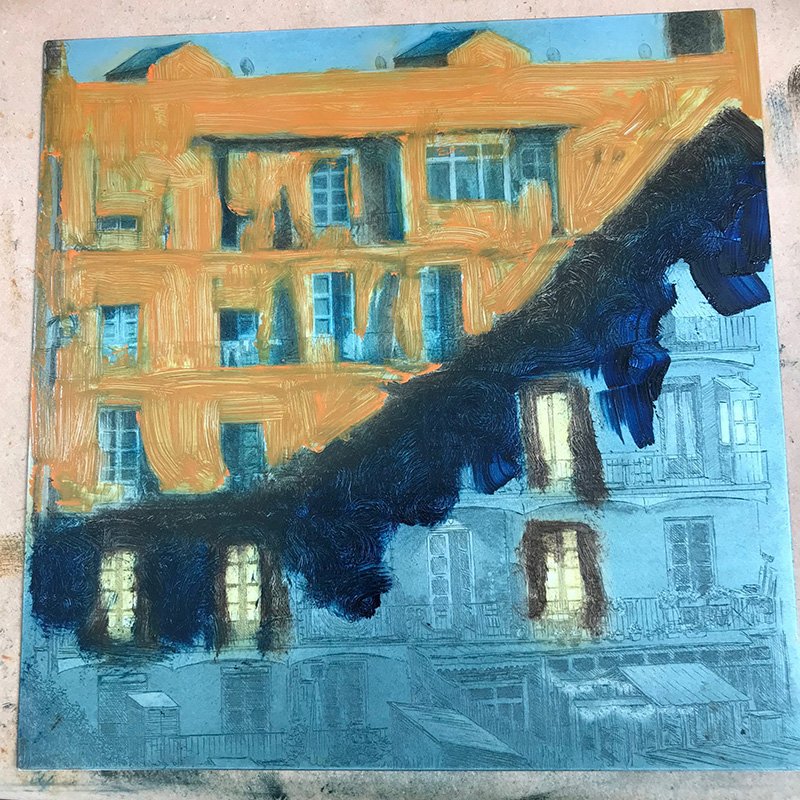
Etched plate in the process of being hand inked.

Hand inked plate ready to be pulled through the press.
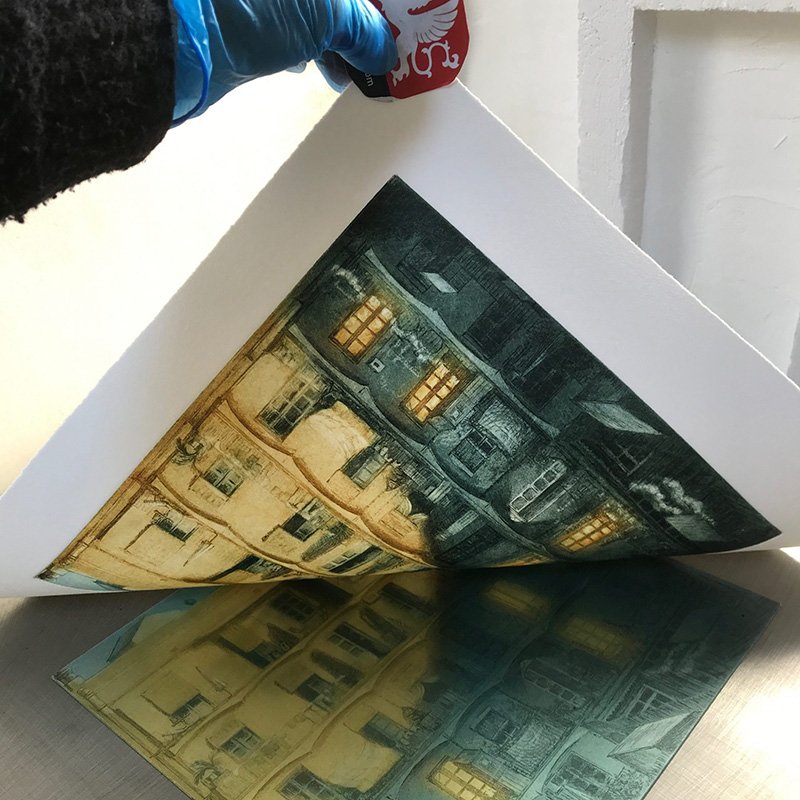
Hand printed print hot off the press.

Side by side hand inked and printed edition.
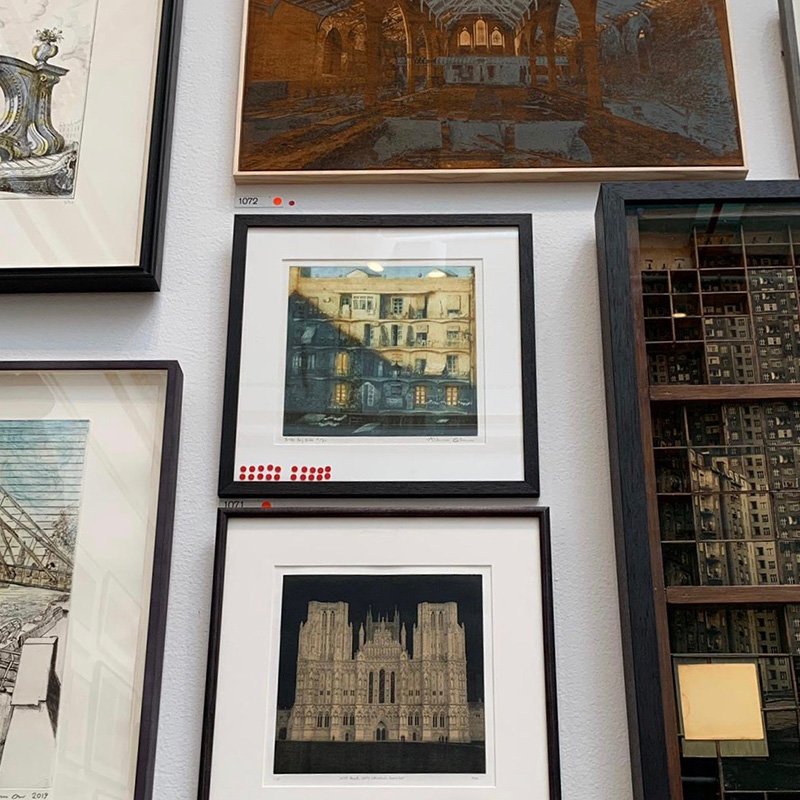
On the walls of the Royal Academy Summer Exhibition.
Lino printing
Relief processes print from raised areas on the printing plate.
Lino cut is a relief print produced in a manner similar to a woodcut but that uses linoleum as the surface into which the design is cut and printed from. An image can be created from cutting several blocks of lino, one for each colour. A reduction lino cut is a method of block printing in which each colour layer is taken from the same block. More lino is removed from the block for each layer and each colour is printed on top of the last. This means that an entire edition must be printed in one go – once you have carved into the block for the next layer, you can’t go back to print more!
Lino printing: ‘Hoxton type’

Reduction lino.
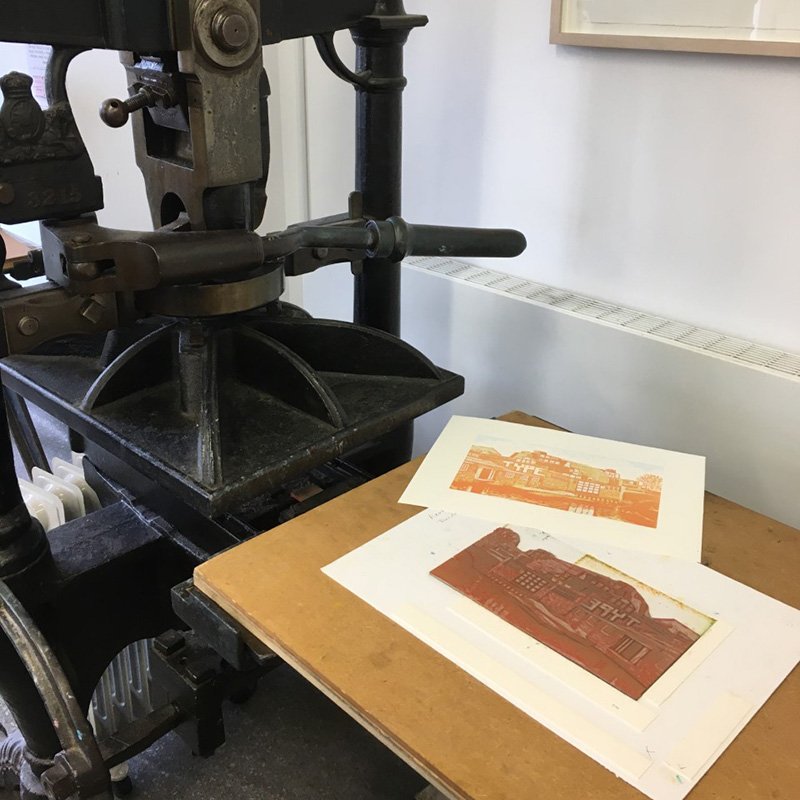
Reduction lino 3rd colour hot off the press.
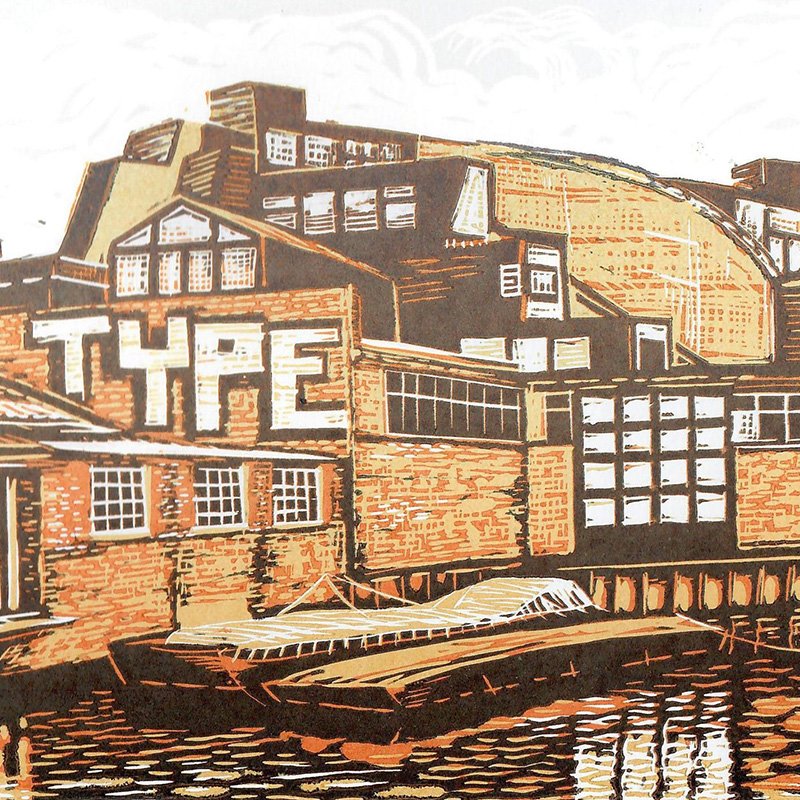
Hoxton Type – Lino reduction 4 colours